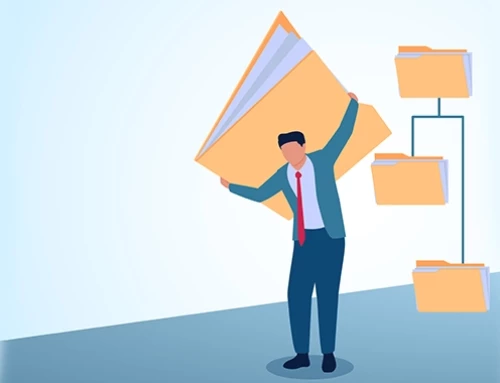Contents
Legal client intake is a crucial process for any law firm. It involves gathering important information about potential clients and determining whether or not to take on their cases. A thorough and effective client intake process can help reduce the risk of malpractice claims and ensure that you are taking on clients who are a good fit for your practice. In this blog post, we will discuss the top five do’s and don’ts of legal client intake to help you streamline your process and make informed decisions about the cases you take on. Legal client intake forms are a major part of this process that you can read more about on our blog.
What is Legal Client Intake?
Legal client intake is the process of gathering essential information from a potential client at the outset of a legal engagement. It is a crucial step in building a successful attorney-client relationship and ensuring that the attorney has all the necessary information to provide competent representation. During the intake process, the attorney typically collects basic information about the client, such as their name, contact information, and the nature of their legal issue. They may also ask more detailed questions about the client’s background, their goals for the case, and any relevant documentation or evidence.
The intake process serves several important purposes. It allows the attorney to assess whether they are the right fit for the client’s needs and goals, and to determine whether the client’s legal issue is within the attorney’s area of expertise. It also helps the attorney to identify any potential conflicts of interest and to establish clear expectations for the attorney-client relationship, such as the scope of the representation, the attorney’s fees and billing practices, and the client’s responsibilities.
A thorough and effective intake process can help to avoid misunderstandings and disputes down the line and can ensure that the attorney is fully prepared to provide quality legal services to the client. However, a poorly executed intake process can lead to confusion, delays, and even malpractice claims. It is therefore essential for attorneys to have a structured and consistent approach to client intake.
Importance of Effective Legal Client Intake
Effective legal client intake is crucial for any law firm as it sets the foundation for a successful client-attorney relationship. A poor intake process can lead to misunderstandings, missed deadlines, and poor outcomes for clients. It can also waste valuable time and resources for the law firm.
On the other hand, a well-designed and executed client intake process can help the law firm gather essential information about the client’s legal issues, goals, and expectations, enabling the attorney to tailor their approach and provide the best possible service. It can also help build trust and rapport between the attorney and client, which can lead to repeat business and referrals.
Furthermore, an effective intake process can help the law firm avoid taking on cases that are outside their area of expertise or that do not align with their values or business goals. It can also help identify potential conflicts of interest, which can be crucial in maintaining the law firm’s ethical and professional standards.
In summary, an effective legal client intake process is critical for ensuring a smooth and successful client-attorney relationship, avoiding wasted time and resources, and maintaining ethical and professional standards.
Do’s of Legal Client Intake
Effective client intake is a critical component of successful legal practice. Here are some important “Do’s” to keep in mind when it comes to legal client intake:
Actively Listen to Clients
One of the most important “Do’s” of legal client intake is to actively listen to your clients. Clients want to feel heard and understood, so it’s essential to give them your full attention during the intake process. Take notes and ask clarifying questions to ensure you understand their needs and concerns.
Build Rapport with Clients
Building rapport with clients is another essential “Do” of legal client intake. By establishing a positive relationship with your clients from the start, you can build trust and lay the groundwork for a successful engagement. Use active listening skills, empathy, and a friendly, approachable demeanor to create a comfortable and welcoming environment for your clients.
Set Clear Expectations
Setting clear expectations is crucial for both you and your clients. Be transparent about your fees, the scope of your services, and the timeline for the engagement. Communicate any potential risks or challenges upfront to manage your client’s expectations and prevent misunderstandings later on.
Educate Clients
Another “Do” of legal client intake is to educate your clients about their legal issues and the legal process. Clients who feel informed and empowered are more likely to be satisfied with the outcome of their engagement. Take the time to explain legal concepts in plain language and answer any questions your clients may have.
Use Technology to Streamline Intake
Using technology to streamline the client intake process is another important “Do” of legal client intake. Online intake forms, client portals, and electronic signatures can make the process faster and more convenient for your clients. This can also help you organize and manage your client intake more efficiently. Here are a few ways you can use technology to make the process more efficient:
-
-
- Online Forms: Consider creating an online intake form that clients can fill out before their first meeting with you. This will allow you to collect important information ahead of time and give you more time to prepare for the meeting. You can also use online forms to collect client signatures for important documents. RunSensible’s form generator lets you easily design and upload customized forms on your website and gather the data for faster legal client intake.
<li
-
>Client Portal:
- A client portal can be an excellent tool for managing client intake. You can use it to share documents, track communication with clients, and keep all of your client information in one place.
- Appointment Scheduling Software: Consider using appointment scheduling software to streamline the scheduling process. This will allow clients to easily schedule appointments with you and reduce the risk of scheduling conflicts. RunSensible has a powerful scheduling feature that lets you make appointments manually or use online calendars that allow your clients to select the time.
- Electronic Signatures: Electronic signatures can be a great way to speed up the intake process. By using electronic signatures, clients can sign documents online, eliminating the need for paper documents. RunSensible comes with E-signature tools for documents that let you point out places to be signed, send the documents, and track their signature status.
By using technology to streamline the client intake process, you can save time and reduce the risk of errors. Additionally, clients will appreciate the convenience of being able to fill out forms and sign documents online.
By following these “Do’s” you can create a positive client experience that sets the stage for a successful engagement.
Don’ts of Legal Client Intake
While it’s important to understand what should be done during legal client intake, it’s equally important to know what not to do. Here are some common mistakes that lawyers and law firms should avoid:
Don’t Overshare Information
During the initial client intake, it’s important to gather relevant information from the client, but it’s equally important to avoid oversharing confidential information about other clients or cases. Lawyers must ensure that they do not violate attorney-client privilege or any other confidentiality agreements while interacting with clients.
Don’t Make Promises
Lawyers must avoid making any promises or guarantees about the outcome of the case during the intake process. The outcome of a legal case can never be guaranteed, and making such promises can lead to malpractice claims.
Don’t Delay the Intake Process
Delaying the intake process can harm the client and the law firm. Lawyers must ensure that they are available to initiate the intake process as soon as possible. Any delays can harm the client’s trust in the firm and may cause the client to seek legal representation elsewhere.
Don’t Ignore Red Flags
Lawyers must pay attention to red flags during the intake process. Red flags can include unrealistic expectations, dishonesty, or an unwillingness to cooperate. Ignoring such red flags can lead to trouble down the line, including difficulty in representing the client effectively.
Don’t Neglect Technology
Technology can be a great asset to your legal practice, but it can also be a hindrance if it is not utilized effectively. Here are some common mistakes to avoid when it comes to technology and legal client intake:
- Relying too heavily on paper-based systems: Paper-based intake systems can be slow, inefficient, and prone to errors. They can also take up a lot of physical space and make it difficult to access information quickly. Consider using technology to streamline your intake process and reduce the amount of paper you need to manage.
- Using outdated software or tools: If you’re using software or tools that are outdated or not user-friendly, it can make the intake process more complicated and frustrating for both you and your clients. Look for modern, cloud-based software solutions that are specifically designed for legal intake.
- Failing to protect client data: Data security is a top concern for clients, and failing to protect their sensitive information can damage your reputation and put your practice at risk. Make sure you have proper data security protocols in place, such as encryption and two-factor authentication, and that all staff members are trained in cybersecurity best practices.
- Ignoring client preferences: Clients today expect a certain level of convenience and personalization when interacting with businesses. Failing to offer digital intake options or communicate through their preferred channels (e.g. email, text, video conference) can make you appear outdated and out of touch.
Using an all-in-one legal practice management software like RunSensible will automatically take care of all these points and let you run almost all aspects of your law firm in the most efficient way possible.
By avoiding these common mistakes, lawyers and law firms can ensure that the legal client intake process is effective, efficient, and beneficial for both the client and the firm.
Conclusion
Effective client intake is crucial to the success of any law firm. By following the do’s of legal client intake, you can ensure that you are providing your clients with the best possible service while also maximizing your firm’s efficiency and profitability. It is important to avoid the don’ts of legal client intake to prevent any negative impacts on your firm’s reputation or potential legal issues.
Moreover, by utilizing technology to streamline the intake process, you can reduce the chances of errors and enhance the client experience. Keep in mind that the legal client intake process is not just about gathering information, but also about building relationships with clients.
By providing a positive first impression, you can increase the likelihood of clients returning to your firm for future legal needs and referring your services to others. Ultimately, investing in effective client intake can help your firm to stand out in a competitive market and improve the overall success of your practice.
If you’re looking for comprehensive legal practice management software that can help streamline your client intake process, consider trying out Runsensible. With its user-friendly interface and robust features, RunSensible can help you efficiently manage your client intake and other aspects of your legal practice. Sign up for a free trial today to see how RunSensible can benefit your firm!
FAQ
1.What are the common mistakes made during client intake?
During client intake, common mistakes include not being prepared for the client meeting, failing to listen to the client’s needs, rushing through the process, not explaining the legal process clearly, and failing to follow up with the client.
2.How can I improve my client intake process?
To improve your client intake process, you can follow these steps: 1) Prepare for the meeting in advance by gathering relevant information, 2) Listen carefully to the client’s needs, 3) Explain the legal process clearly, 4) Provide clear and concise fee agreements, and 5) Follow up with the client after the meeting.
3.How can technology help with legal client intake?
Technology can help with legal client intake in several ways, such as automating routine tasks, streamlining document management, and simplifying client communication. Using an all-in-one legal practice management software like RunSensible can help you efficiently manage your client intake process, reduce manual errors, and enhance the client experience.
Disclaimer: The content provided on this blog is for informational purposes only and does not constitute legal, financial, or professional advice.






